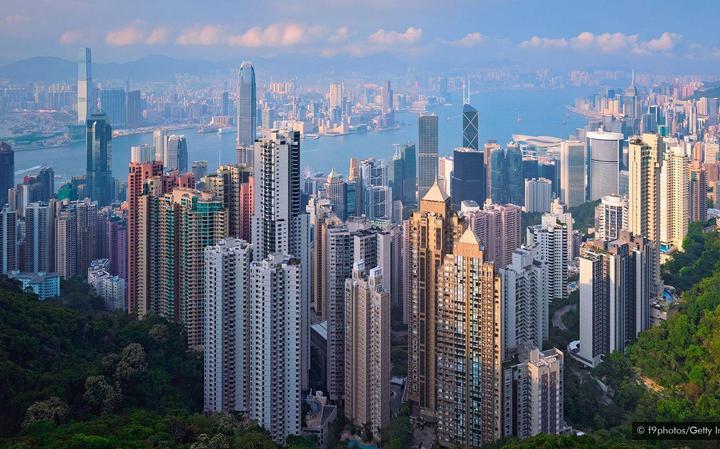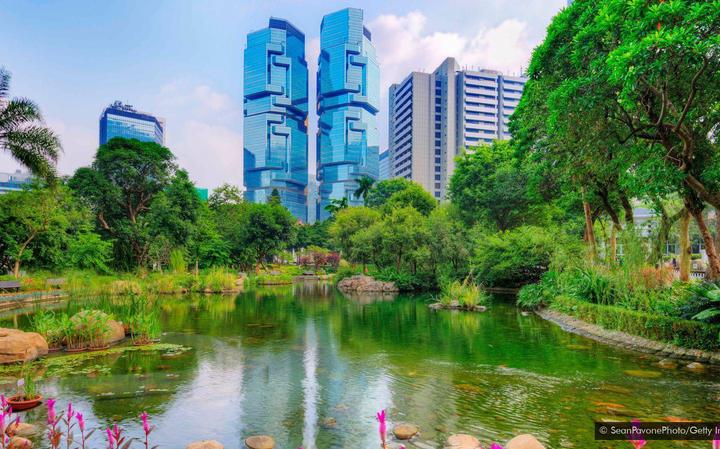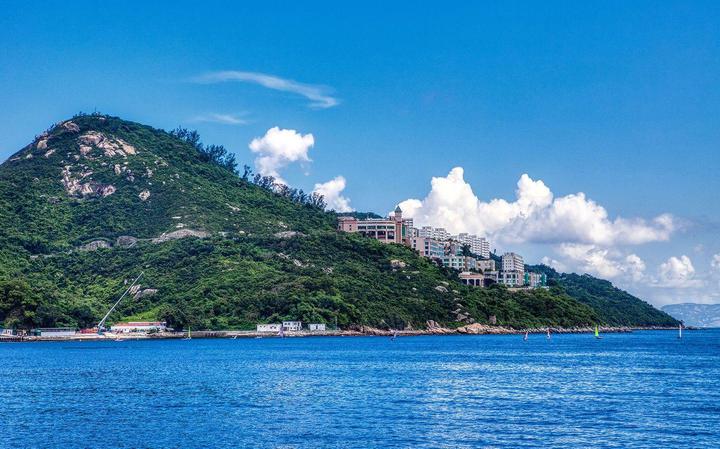Hong Kong climate history

For Hong Kong’s British colonisers, there was only one solution to the territory’s stifling summers: ice.
The humid embrace of Hong Kong’s summer is heavy and hard to shrug off. The best antidote to such sultriness is found in a thick-stemmed soda glass half-filled with iced red bean, a deliciously syrupy mixture of sweetened, softened adzuki beans topped with evaporated milk and poured over crushed ice. It’s a Cantonese classic thought to be inspired by a popular Chinese dessert and given a Western twist in its diner-style presentation – and is best enjoyed beneath the whirling ceiling fans of one of the city’s bing sutt cafes, where Hongkongers have gone to cool down for decades.
But it was not always so simple to escape the heat in Hong Kong. When the region was ceded to the British in 1841, the wealthiest colonists built large, shaded mansions on Victoria Peak, which offered relative respite from the muggy conditions, and they adorned their elegant dinner tables with tinned foods imported from their homeland.
People tend to forget now, but we live in a Hong Kong that couldn’t exist without air conditioning
But for most of Hong Kong’s British colonisers, there was only one solution to the territory’s stifling summers: ice. Accustomed to the cooler climes of their homeland where they had access to ice houses for food storage, the acquisition of ice was of immediate importance.
In the 1840s, however, there was no way of freezing water in the humid city. Instead, ice had to be imported from North America, brought over on large ships by Boston’s “Ice King”, Frederic Tudor, where it was stored at the settlement’s first ice house. Completed in 1845, the Ice House Company’s building was well-situated on the water’s edge – which has since retreated some 700m through land reclamation – but the enterprise was relatively short-lived, and by 1850 it had closed.
For the following decade, ice entered Hong Kong from northern China, where, much like in North America, it could be harvested from frozen rivers and lakes. By the early 1860s, the Tudor Ice Company resumed importing ice to the colony, around the same time a second cold storage warehouse was built across the road from the original. Today, this location is better known as “Ice House Street” and is situated in the heart of Central, Hong Kong’s financial and retail nexus.
However, it was not until 1874 that Hong Kong began producing the commodity the British so craved, when Scottish engineer John Kyle obtained a patent for the colony’s first ice machine and, in partnership with compatriot William Bain, set about selling locally made ice using vapour-compression refrigeration systems from a plant in East Point (present-day Causeway Bay). As automation eased ice production, larger companies soon became interested in selling it, and Jardine Matheson and Company (now known as Jardine Matheson Holdings and one of Hong Kong’s major conglomerates) bought out Kyle and Bain in the late 1870s.
Although neither of the original ice houses are still standing, you can walk to the top of Ice House Street on Lower Albert Road to see a rare architectural reminder of Hong Kong’s early colonial past: a striking low-rise brick and stucco building that stands out amid a cityscape of glass and steel. Now home to the Fringe Club and Foreign Correspondents’ Club, a non-profit arts organisation and a media-focused private members’ club respectively, it was built in 1892 as the depot of the Dairy Farm, a major food retailer that supplied ice and dairy products to nearby hospitals and local residents, almost all of whom would have been affluent expats.
In fact, ice remained exclusively an expatriate concern for decades. As cold storage became more common in affluent households, imported meat and fruit began to grace British banquets, washed down with a well-chilled drink. Local diets, however, comprised fresh seafood, meat and vegetables, ingredients that required no refrigeration. In Chinese culture, then as now, hot water is believed to hold health benefits and is said to improve digestion and blood flow; cold water is rarely drunk.
But the pursuit of ice was not to remain a British endeavour forever. In the early 20th Century, it eventually entered Cantonese cuisine – and therefore culture – through bing sutts (literally, “ice rooms”), humble cafes where locals would go to enjoy an iced drink.
“People tend to forget now, but we live in a Hong Kong that couldn’t exist without air conditioning,” said Daisann McLane, who runs food and culture tours with her company, Little Adventures in Hong Kong. “At that time, electricity was scarce and nobody had refrigerators, so, the idea that in the height of summer in Hong Kong you could walk into a place and get a cold drink – it was a huge draw.”
At the peak of their popularity in the 1950s and ‘60s, there were bing sutts throughout Hong Kong, and they played an integral role in the fast-industrialising city. For the hundreds of thousands of Chinese labourers who returned to Hong Kong after the 1941-45 Japanese occupation, or who arrived in the colony to man its factories, bing sutts offered more than just a place of respite from a hard day’s work. The cool cafes also catered to their tastes, serving cold drinks like Hong Kong-style iced red bean alongside affordable Cantonese takes on Western food, such as pineapple buns – a sweet treat with a crunchy, golden topping that was conceived for local tastes and appealed for its perceived exoticism.
The British might have introduced ice to the colony, but it was the Hongkongers who democratised it, making cold drinks accessible to all.


